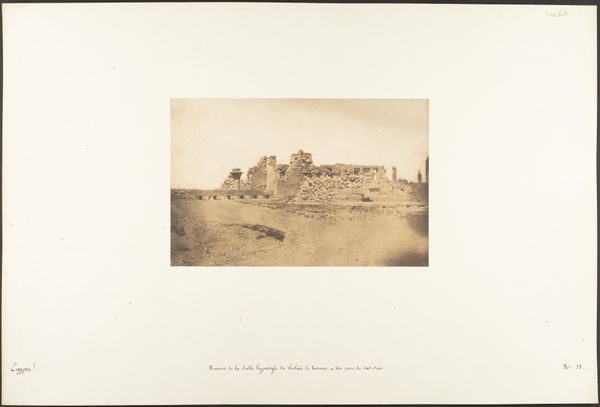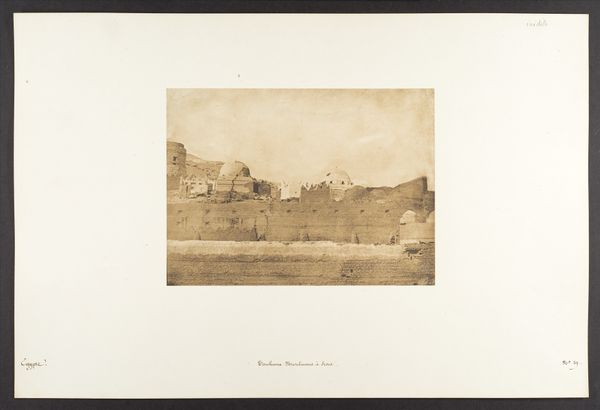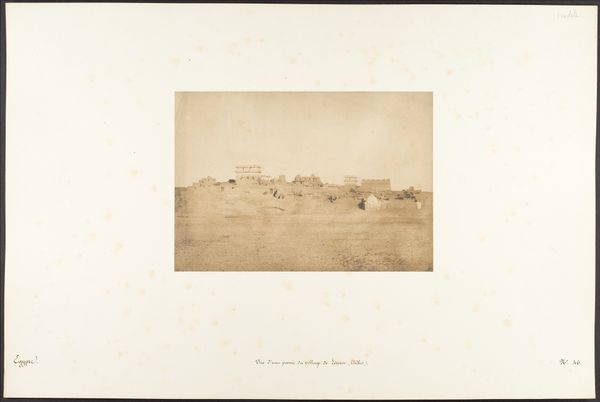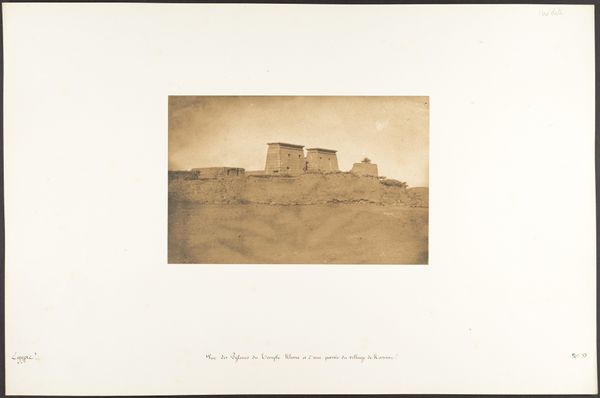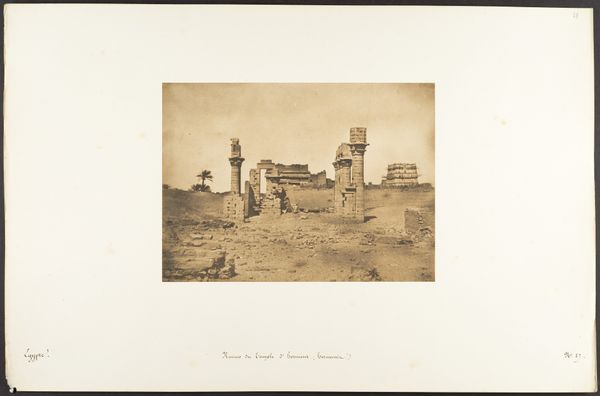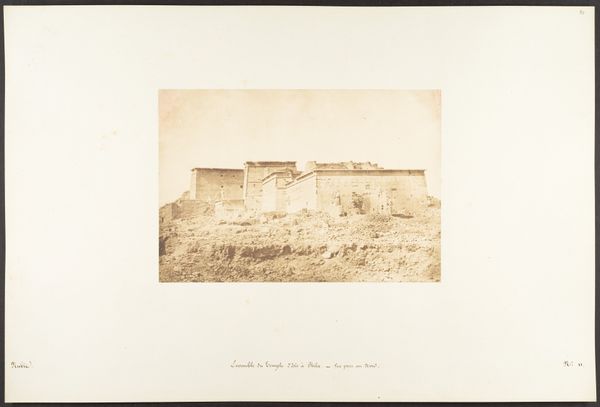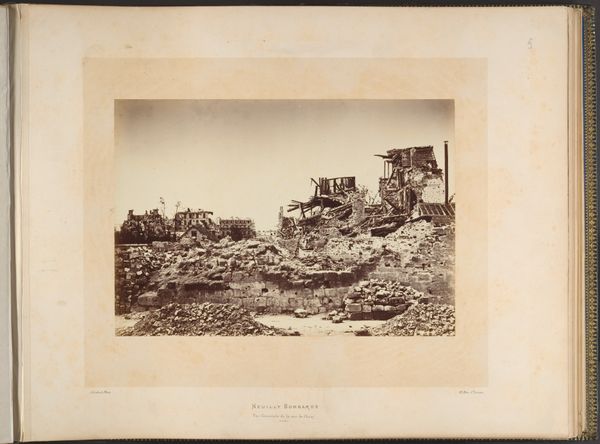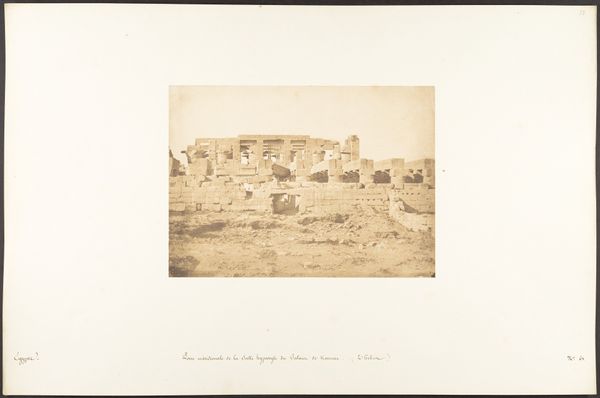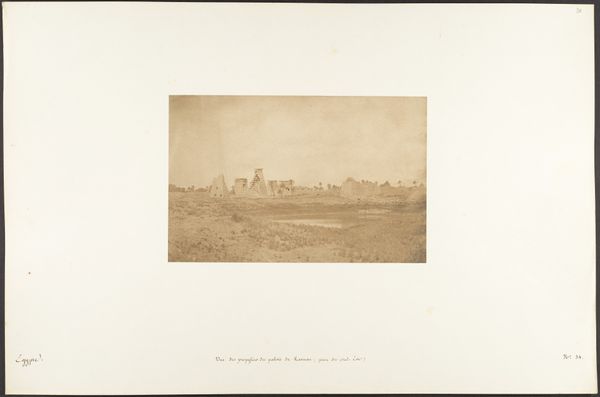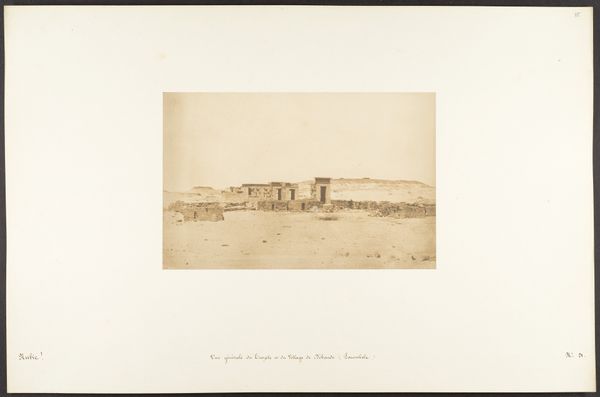
Vue générale de l'île de Philae, prise de la pointe Sud de l'île de Begueh 1849 - 1850
0:00
0:00
daguerreotype, photography, architecture
#
landscape
#
daguerreotype
#
ancient-egyptian-art
#
photography
#
ancient-mediterranean
#
architecture
Dimensions: Image: 6 9/16 × 8 7/16 in. (16.6 × 21.4 cm) Mount: 12 5/16 × 18 11/16 in. (31.2 × 47.5 cm)
Copyright: Public Domain
This is Maxime Du Camp's "Vue générale de l'île de Philae, prise de la pointe Sud de l'île de Begueh," a photograph capturing the island of Philae, created in the mid-19th century. Du Camp, a French writer and photographer, undertook this project during a time of intense European interest in Egypt, fueled by colonial ambitions and the desire to document and possess its cultural heritage. Looking at this image, one can't help but consider the power dynamics at play. Du Camp, as a European man, was given the privilege to travel and document a land with ancient roots. The photograph serves not only as a record but also as a statement of cultural authority, defining how the West would come to see Egypt. It’s a view of a distant, exotic land, filtered through the lens of European expectations and desires. Du Camp's photograph contributes to a narrative of Egypt as a land of ruins, devoid of contemporary life, ripe for exploration and, implicitly, for Western intervention. While seemingly objective, photography like this played a significant role in shaping the colonial narrative, impacting not only the representation of Egypt but also its political and cultural destiny.
Comments
No comments
Be the first to comment and join the conversation on the ultimate creative platform.
